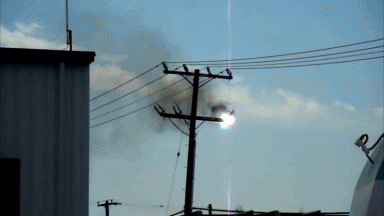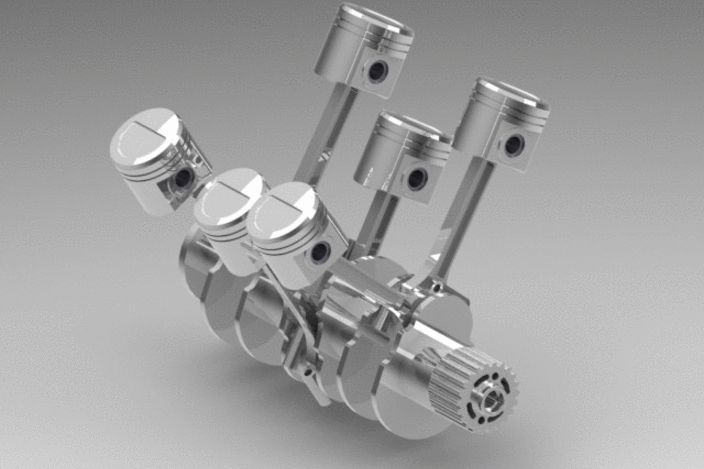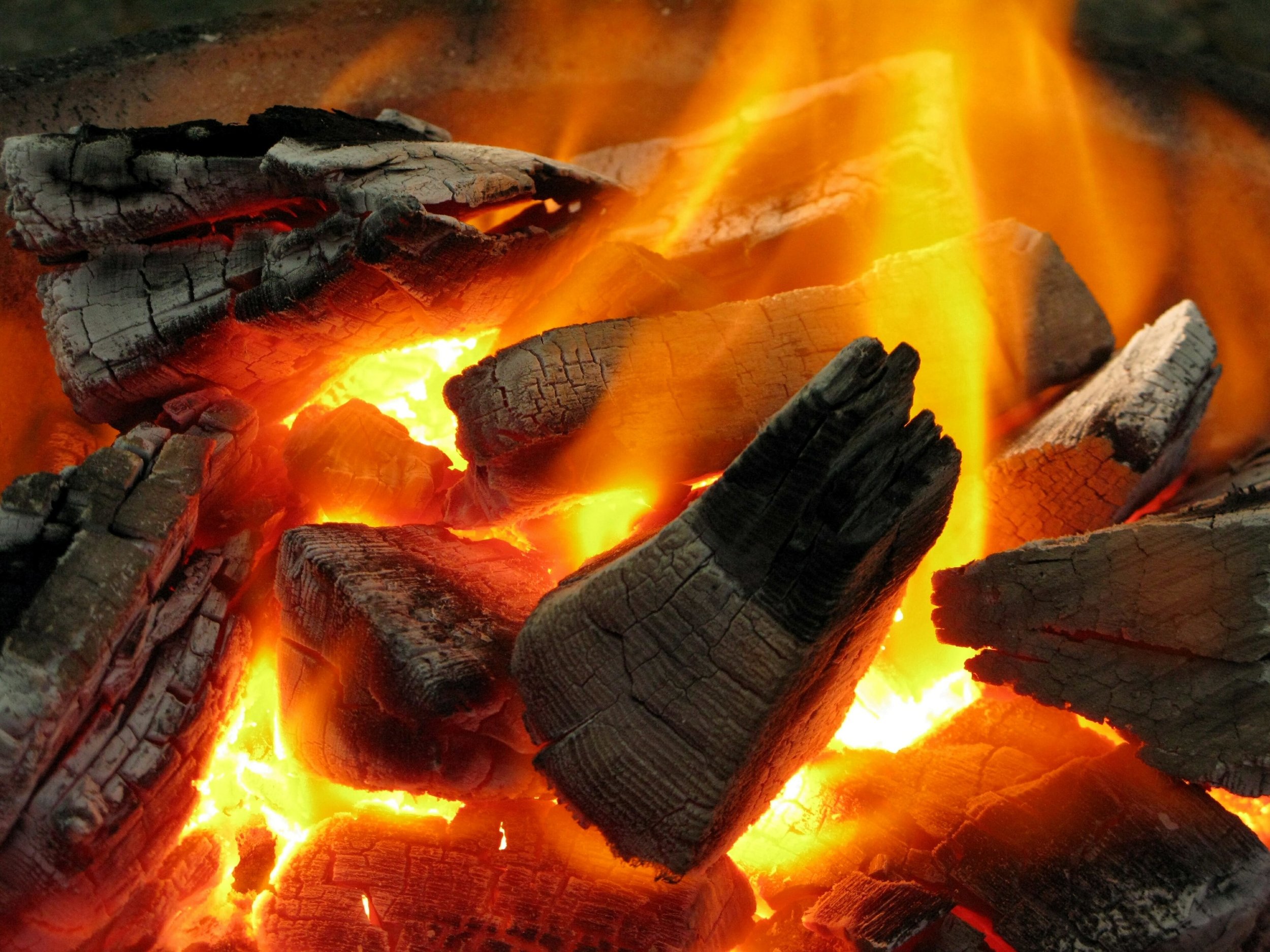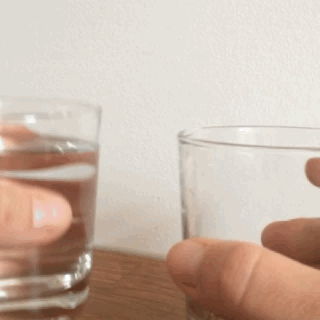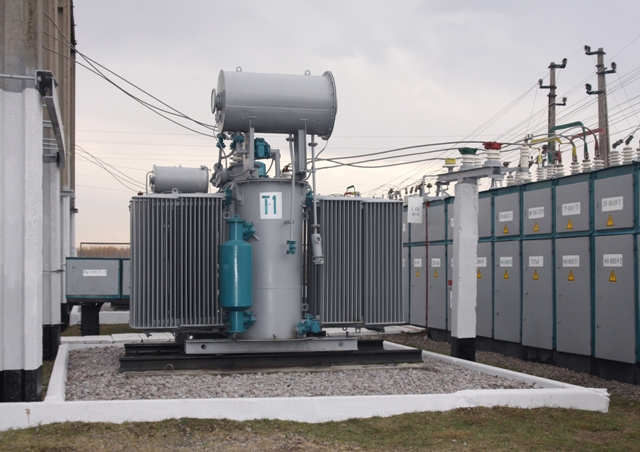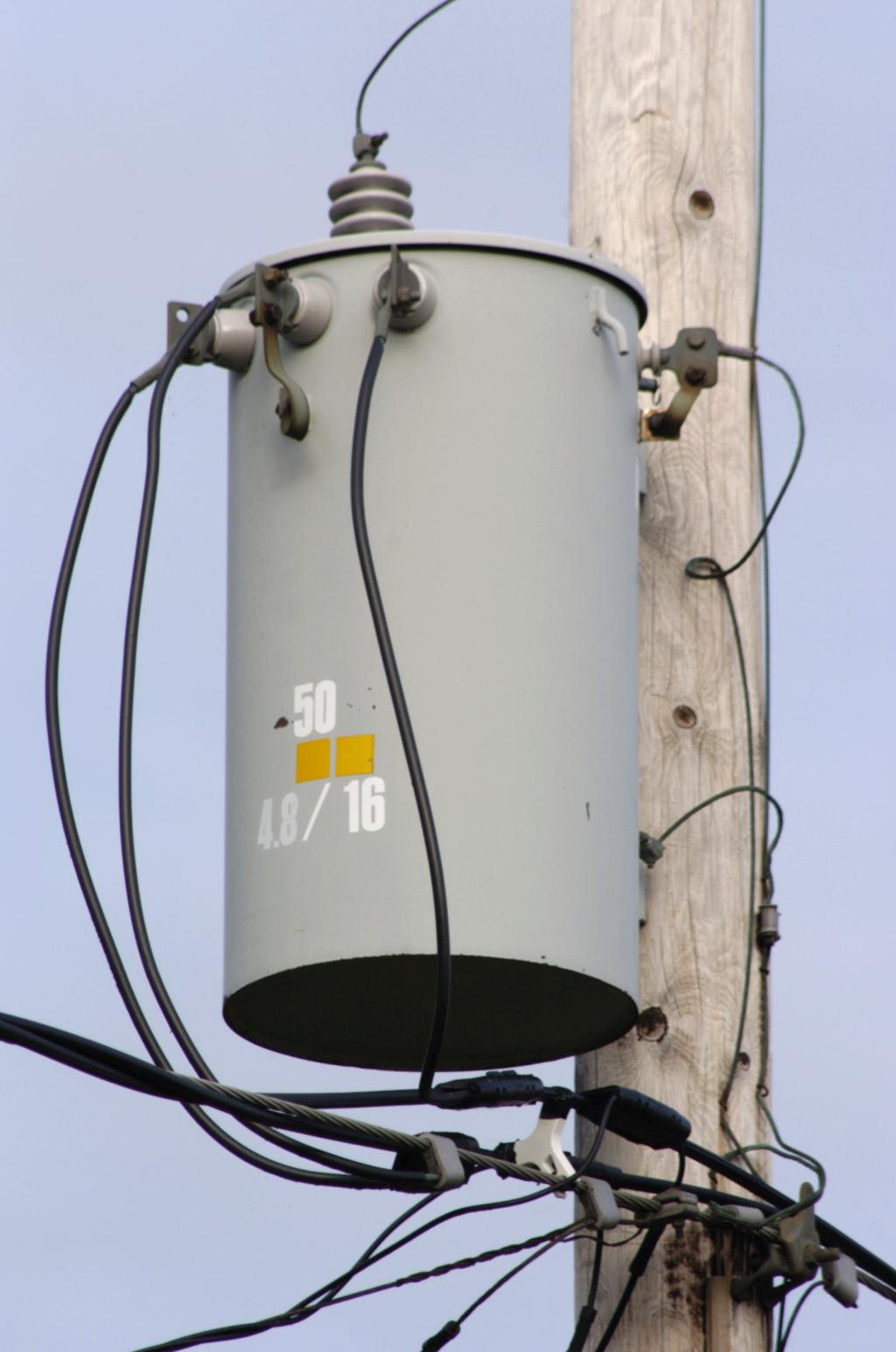Energy Types & Transformations
Forms of Energy
Energy is the ability to do work, there are many different forms of energy!
Chemical – energy stored in chemical bonds
Electrical – energy of charged particles
Mechanical – Total energy of moving objects (Both potential + kinetic energy)
Thermal – kinetic energy of particles (heat energy)
Storing energy = Chemical Energy
Energy is stored in chemical bonds (ex. sugar)
Energy is released or absorbed in chemical reactions (ex. combustion)
Chemical energy can be transformed into other forms of energy (ex. battery provides electricity)
Energy Transformations
you can use various devices to transform energy from one type to another
chemical energy to electrical energy
(ex) batteries, hydrogen cell
thermal energy to electrical energy
(ex) thermocouples, two different metal pieces connected then heated
electrical energy to thermal energy
(ex) oven, space heater
electrical energy to chemical energy
(ex) battery charger
mechanical energy to electrical energy
(ex) generator
An example of mechanical energy transforming to electrical energy
Magnets!
METAL FILLINGS INTERACT WITH MAGNETIC FIELD SHOW ITS SHAPE!
magnet:
Iron material or object that produces a magnetic field.
contain a north pole and a south pole
magnetic field flows North → South
opposite poles attract (N⇾S)
similar poles repel (⇽N N⇾)
ElectroMagnet:
A type of a temporary magnet where the magnetic field is produced by the flow of an electric current through a conductor.
A magnetic field formed is a ring around the conductor (in most cases a wire)
The magnetic field flows in a clockwise or counterclockwise direction around the wire. The direction of flow depends on the direction the current flows through a conductor.
Interaction of magnets
Q: What happens when similar poles of a magnet interact?
A: Both magnets repel, they create a pushing force, tadah!
Based on this principal we can create a pushing force using electricity!
Magnet interacting with Electromagnet = Force
Electrical energy ➞ Mechanical energy
By using the interaction of magnets with an electromagnet inventors created the electric motor — a device the uses force to spin an axle. By having electrons flow through a wire it creates a magnetic field that interacts and is repelled by the magnetic field of a magnet.
The reverse is true too! A magnet can be used to create electron flow through a wire. Quickly moving a magnet next to conducting wire causes electrons to flow!
The left hand rule
Left Hand Rule:
A “handy” way to show how an electric current will interact with a magnetic field to create a force
Thumb = Force (F)
Index = Magnetic field direction (B)
Middle = Current (I)
Electrical Energy into Mechanical Energy
A LOOP OF WIRE WITH CURRENT INTERACTS WITH A MAGNET TO CREATE FORCE WHICH ROTATES
We now know that a conductor (wire) which has current flowing through it will interact with a magnetic field resulting in the wire being pushed by a force.
Magnetic Field + Electromagnetic Field = Force
This force caused by the interaction of magnetic and electromagnetic fields is mechanical energy, and it can be harnessed to create a rotational force.
PARTS OF AN ELECTRIC MOTOR
All electrical motors ESSENTIALLY have 4 parts:
Magnet - create magnetic field along the outside
Armature – a rotating shaft of motor with loops of wire, the loops of wire create the electro magnetic field.
Commutator – a ring that maintains the flow of electricity in one direction through the wire, this helps maintain rotation
Brushes – metal brushes that conduct electricity from cell or battery to commutator
how a motor works:
Electric current travels from the brushes into the commutators
Commutators magnetize the wire coil
Magnets push or pull the wire coil
Rotation of armature switches the position of the commutators
Cycle continues until current is stopped
AC/DC
THE FLOW OF ELECTRONS IN DIRECT CURRENT VS ALTERNATING CURRENT
Direct and Alternating Current
Direct current (DC):
Current of electrons flow in only one direction (from positive to negative terminal in a battery)
Used in devices such as calculators, watches, cell phones, MP3 players etc
Using the water metaphor: “electricity” pours from one glass to the other
Alternating current (AC):
Current of electrons flow back and forth 60 times per second
Used in household circuits
Plug-in devices that require DC current come with their own power supply that converts the socket’s AC current into DC and then supplies the voltage required (Called a transformer)
Using the water metaphor: “electricity” pours from one glass to the other then back again. This back and forth happens 60 times per second.
AC vs. DC an Ol’ Timey Drama
Magnetic Fields vs. Electrons
Thus far we have learned that electrons moving through a conductor creates a magnetic field around the conductor.
Moving electrons in a conductor = Magnetic field
…It turns out that the reverse is also true!
Magnetic field = Moves electrons in a conductor
This is known as induction!
Electromagnetic Induction:
The generation of electrical current in a conductor by moving a magnetic field near the conductor
This concept is how we create generators. Essentially a generator is similar to a motor with one major difference; the magnet and the armature are switched around, the magnet is replaced by coils of wire and the armature spins a magnet around.
There are two types of generators:
DC – like a DC motor where the spinning armature produces a one way flow of electrical current
AC – has 2 slip rings instead of a commutator, current flows out through one slip ring then the other, alternating
For industrial generators massive magnets spins inside large amounts of coiled wires produce electricity
Transformers
ENERGY TRANSMISSION REQUIRES TO USE BOTH STEP UP, AND STEP DOWN TRANSFORMERS
The most efficient way to transmit current over long distances is at a high voltage, close to 500 000 V (electrons need tons of push to get through that long distance)
However we can’t use this in our houses so the voltage needs to be dropped
Transformers use magnetic fields to transform one voltage to another
There are two types of transformers:
Step down transformer – reduces voltage - have less coils coming out than going in
Step up transformer – increases voltage - have more coils coming out than going in
Measuring Energy Input & Output
Power:
Power is the rate at which a device converts energy, measured in watts (W)
P = IV
where: P = power in watts (W)
I = current in Amperes (A)
V = voltage in volts (V)
Example
Calculate the power used by an MP3 player if it uses a current of 5.0 A and a voltage of 3.0 volts.
I = 5.0 A P = IV
V = 3.0 V = (5.0 A)(3.0 V)
P = ? = 15 W
REVIEW QUESTIONS KEY
Energy:
The power rating of a device and the time it runs to calculate the amount of energy used, measured in Joules (J)
E = Pt
where: P = power in watts (W)
t = time in seconds (s)
E = energy in Joules (J)
Example
Calculate the energy usage if a 15 W MP3 player operates for 2 minutes.
P = 15 W E = Pt
T = 2 min = (15 W)(120 s)
= 2 min x (60s/min) = 1800 J
= 120 s
E = ?
The Kilowatt Hour
We use different measurements to measure distances: centimeters, meters, and kilometers.
Q: How far is Edmonton from Calgary?
A: 30,000,000 centimeters! This is nonsense! We measure large distances in kilometers!
Just how we measure distance using various units, we can also measure Energy with various units
Let’s apply this to Energy: how much energy is used if a fridge uses 500 watts of power in 60 minutes?
E = Pt … so … E = 500 watts x 3600 seconds
E = 1,800,000 joules
That’s a lot of joules, imagine we measure all of the energy use in our homes? That would be a very large number. What if we measured it using a different unit?
Because we use a lot of energy we use a more practical unit called the kilowatt hour (kWh)
Electrical companies informally call it “units” instead of kilowatt hour
Calculated with the same formula E = Pt
But, in this case...
Power rating is measured in kilowatts (1 kW= 1000 W) rather than watts
time is measured in hours (h) rather than seconds
Lets take our previous example:
How much energy is used if a fridge uses 500 watts of power in 60 minutes?
E = Pt … but this time lets use kilowatts instead watts and hours instead of seconds … E = 0.5 kilowatts x 1 hour
E = 0.5 kWh
Instead of saying that the fridge uses 1,800,000 joules, we can say it uses 0.5 kWh. Same amount of energy! Just different units of measurement.
Lets try another example:
An fan uses 30 watts of energy in 90 minutes. How much energy does this appliance use.
E = Pt
E = 0.03 kW x 1.5 hrs
E = 0.045 kWh
Lets go one step further…
Electric companies are charging about 6 cents per kWh (6 cents/kWh) , how much would our electric bill be if we use the fan from our previous example?
6 cents/kWh x 0.045 kWh = 0.27 cents (wow that’s cheap!)
Energy Dissipation
Law of Conservation of Energy:
Energy cannot be created or destroyed, it can only change from one form to another
With electricity energy is "lost" (dissipated) as heat, sound and/or light in every conversion
Every time electricity passes through a conductor a little bit of that energy is lost as heat, this creates inefficiency!
Efficiency
The efficiency of a device is a comparison of the input energy and useful output energy
Q: Why are LED bulbs considered to be environmentally friendly?
A: LED bulbs are so good at converting energy to light, that less energy is needed to power them. They are highly efficient!
Efficiency:
How well a machine converts energy input into a different form of energy output.
Example - A light bulb converts electrical energy into light & heat energy
Example - A generator in a dam converts mechanical energy into electrical energy
Efficiency is calculated using the following formula
Efficiency = Joules of useful output / Joules of input energy
or restated as:
Eff = Work Output (J) / Work Input (J)
Efficiency percentage = Eff x 100
Example
Calculate the efficiency of a light bulb that emits 20 J of light energy for every 80 J of input energy.
Work Input = 80 J
Work Output = 20 J
Efficiency = ?
Eff = Work output (J) / Work input (J)
= 20 J/ 80J
= 0.25
Efficiency (percentage) = Eff x 100
= 0.25 x 100
= 25 %
Reducing the Energy Wasted by Devices
There's a limit to Efficiency
Devices used to create heat are very efficient (ex. a space heater).
Any device that does not use the heat produced in the energy transformation is not as efficient (ex. a light bulb, a motor)
Efficiency can be increased by:
Decrease friction in the system – can use bearings and oils with moving parts (motor oil in an engine)
Increase insulation – improve for devices that you don’t want to lose heat from (ex refrigerator, or oven)
Renewable vs. Nonrenewable Resources
Renewable resources:
Resources that can be replaced in a short period of time
(ex) solar energy, wind energy
Nonrenewable resources:
Resources that cannot be replaced as they are used up
(ex) natural gas, coal, uranium
Non-renewable Sources of Electricity
How we generate electricity
1. Start with the boom! Release energy as heat!
About 65% of the electricity in the world is generated by burning oil, coal or natural gas
In Alberta most of our energy comes from burning coal, however we are shifting to renewables
Can also use nuclear fission, in which a heavy element like uranium is split into smaller atoms
Turbine:
A machine which uses a stream of air, gas, water, or steam to turn a wheel to produce a turning force. Turbines are connected to the armature of generators which spins, and pushes electrons through a conductor creating electricity.
2. Use heat to turn water into steam
Steam then turns large turbines
Each turbine rotates wire coils in a generator which produces electricity
3. Allow water to cool down, and reuse water/ release water
**can also get energy to turn water into steam from geothermal energy or burning biomass ,with hydro-electric power, the energy of the falling water turns the turbines
Renewable sources of electricity
1. Tides
Moving water can power turbines that run generators
(ex) Nova Scotia in the Bay of Fundy
2. Wind
Moving air (wind) can turn turbines that run generators, many windmills connected together is called a wind farm.
(ex) in Pincher Creek Alberta
3. Sunlight
Solar energy is converted into electrical energy by silicon-based solar cells
4. Hydro Electric Dams
Moving flowing down a grade powers turbines that run generators
5. Fuel Cells
Hydrogen gas continuously feeds a chemical reaction that produces electricity, it creates water as a waste product. The only caveat is that producing hydrogen fuel creates pollution.
Electricity & the Environment
Air Pollution
Burning fossil fuels releases pollutants
Coal-burning power plants release small amounts of fly ash into the atmosphere which contains mercury
SOx, NOx, and CO2 released through combustion lead to acid rain formation
CO2 also causes the enhanced greenhouse effect
Other Environmental Effects
strip mining of coal results in a disruption of the environment
oil and gas wells may release deadly gases
steam turbines release warm water into rivers and lakes, which can harm organisms
nuclear reactors produce radioactive wastes
hydroelectric dams flood river valleys
wind farms make large areas of land not useable for anything else
building solar cells requires harmful chemicals
tidal generators displace marine organisms
“green” sources of energy (tidal, geothermal, wind) harm the environment much less than burning fossil fuels
Conservation - Why we turn off lights when leaving a room
Higher demand for energy means higher consumption of energy resources
Lowering energy use conserves nonrenewable resources
Conserving energy means using resources at a rate that can be maintained indefinitely (forever)
Using energy at the same rate we can produce it is called sustainability
Personal decisions by all people influence sustainability
Electricity & Society
Advantages
Increase in production capacity causes an improved standard of living
Many tasks can be completed quicker, giving us more free time to enjoy life
Electricity forms the basis of many new businesses, institutions, and networks (ex. google, microsoft, banking systems, social media platforms)
Computers become a part of daily life
Disadvantages
technology can be expensive, not everyone has the opportunity to consume technology
energy use sustainability is threatened
use of electricity causes vast amounts of pollution
old discarded technologies adds to solid waste
Viewpoints
You can look at how things affect society through a variety of viewpoints:
1. economical – money
2. political – laws and governments
3. technological – technology
4. environmental – effect on ecosystems, organisms etc
Choose a type of energy generation:
Create a four-corners chart that identifies the impacts both benificial/negative for a certain type of energy generation.
Identify concerns regarding conservation of energy resources, and evaluates means for improving the sustainability of energy
Energy Storage technology
Watch the following video and answer the following questions
Please answer the questions on the form here!

